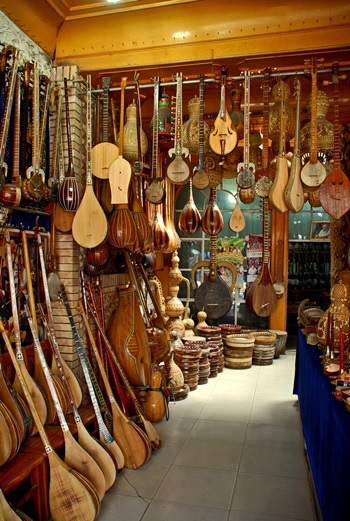
A selection of fretted and unfretted lutes and other stringed instruments hung from the walls and ceiling, bodhran-like daf drums in stacks on the floor. In the rear of the store is a large, magnificent rawap or rabab decorated with snakeskin, bone and horn, and the bowed kushtars with carved birds perched lightly on the top of the neck where scrolls are positioned on western violin-like instruments. Reeds, pipes and painted and inlaid camel gourds were scattered on the central tables of the store. A treasure-trove of Uyghur musical culture all under one roof.
For the most part, many Uyghur musical instruments are related to Central and Western Asian instruments with some even having counterparts in the Levant and on the Arabian Peninsula. Some scholarly work suggests that some of these instruments even arose from Mesopotamian instruments and the history of their use is several millennia old.
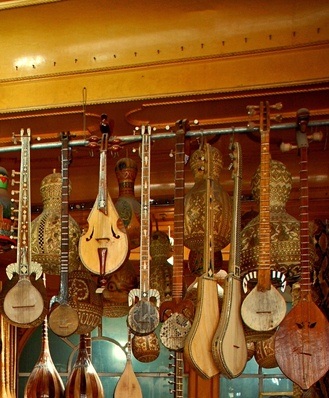
For me, the most visually stunning of the instruments is the rawap. It has a rounded base made of a single piece of mulberry wood that is usually covered with snakeskin. In the case of this instrument workshop, python skin imported from Burma was the most commonly used skin. In addition to the snakeskin, the horns just above the junction of base and neck are characteristic. Today these are usually constructed of parqueted bone, but one or two examples in the shop had old-school horns on them. Both the base and neck are often inlaid with intricate designs. These instruments have three strings laid in three courses and are usually played with a plectrum on the right hand.
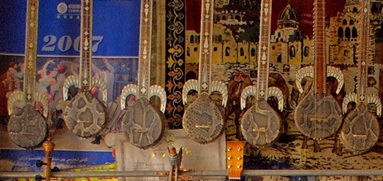
The most special part of the visit was to meet the shop owner, Mr. Muhammad Emin Ababakri, who is a fifth generation Uyghur musical instrument craftsman, and to get a brief tour of the workshop where all of his remarkable creations are made. Made by hand, by himself and by the other craftsmen he employs. I got to view several stages of instrument construction from honing the neck of a lute to tuning a newly made dutar and making sure the tone was of good enough quality to sell in Mr. Ababakri’s shop. You’ll find no plastic or nylon on his instruments, all of his frets are made from viscera or silk, and no plastic in the inlay, only bone, horn and wood – the finest traditional materials for the most beautiful instruments.
Alas, I left the shop empty-handed, because the instruments are dear even by western standards, but I will fondly remember the trip and may even write back to see if a rawap can be shipped to the US someday. (Words and photos by Laura Kelley. For those wishing to contact Mr. Ababakri, his card is scanned beneath the Uyghur musical samples.)
Here is an example of Uyghur music by one of its masters, Envar, playing the dutar and singing.
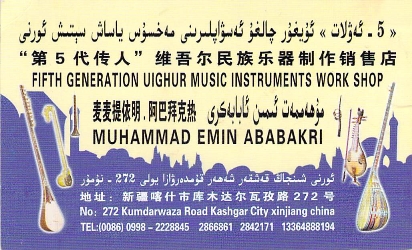

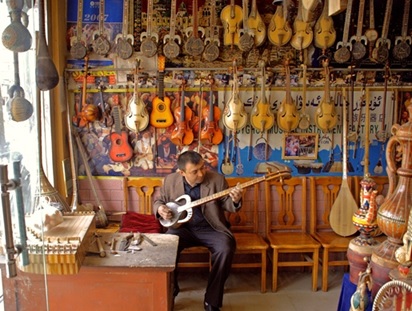
Hello,
Do you know how I can get a hold of the instrument builder. I am looking for an Uyghur dutar.
I really appreciate it if you could help me out.
Regards,
Peyman
Hi Peyman: I posted the business card of the instrument maker at the bottom of the post. You can contact him. The problem may be language, unless you speak Uyghur or know someone who does. Good luck! Laura